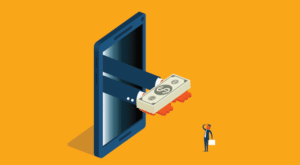How to earn $900 per month from Appsgeyser platform
Vision: What kind of app to create

My name is Elena and I’m working at Appsgeyser company. For the last 4 month I’ve been doing an experiment with publishing apps on Google Play. So I’ve decided to share my knowledge with you.
There are more than 3 million applications available and 3000 more added every day on the Play Market. Due to the huge selection, not every app will be downloaded by users. Our goal is to publish an app that would comply with Google Play rules and would have demand. We need to get organic traffic for our application because there is no huge promotion budget. We don’t want Google to delete our apps in the first month, so it is necessary that the application is useful for users. Therefore, we offer a simple way – to make additional/fan-made content for well-known applications and games and put it into the application using the Appsgeyser builder. Thus, we’ll provide traffic to the app with the power of existing brand AND we don’t waste any time because we’re developing an app with the help of a builder AND we give benefits to people in the shape of an app with additional content.
Ideally, you publish the app after every hyped release of the new application on Google Play, a trend on the Internet or big movie premiere. We hope you got an idea, so let’s go practice creating an app that’s successful on Google Play.
Step-by-step instruction “How to publish an app and get downloads organically”
I’m going to tell you how I made $900 on apps I created with the help of Appsgeyser templates, using this app as an example.
Step 1. Market analysis – how to decide what kind of app to create
The task is to identify top search phrases in your country or area of interest, determine what kind of apps people often download from the Play Store.
Here are the steps:
- Go to Top Charts in the category you are interested in, write down the first 10 applications, then go to New releases of the same category, write down the first 5 apps. Useful link
- Go to Google Trends, enter the names of the applications there
- If you notice that the particular kind of app has noticeably better demand – target it
- Go back to the Market – insert the name of the game into a search field to explore competitors
- Check what kinds of apps are displayed for this request and which of them could be repeated or improved
- If you didn’t find a single application based on a popular game (guides or wallpapers or quizzes) – perhaps this brand throws claim on everyone who uses their name, so there is a big risk of a ban even before the app is published. But it’s not a solid rule, you need to test everything
- Explore chosen application, use it on a daily basis. You should understand why users choose this app – that’s where all your ideas will come from
What can go wrong:
Some brands enforce copyright laws and protect intellectual property very strictly. If you are unlucky in choosing a brand, then Google can ban your app at the review stage, without even publishing it on Marketplace. To avoid this situation, I recommend you look at the direct competitors who have already published the same app as yours – if you can find them and there are more than one of them, then you can create a similar app. Also you need to put a disclaimer about Intellectual Property. Typically, brands provide a disclaimer like this at their Terms Of Service or Fun Content Policy pages. I suggest checking it every time.
So let’s analyze Case Simulator Steam games application. AppsGeyser has a template you can base similar app on.
Step 2. Create an icon and a promo image for your app
Create a 512×512 icon and a 1024×500 promo image. This graphics should look professional, it’s better to add keywords to the images. Google will scan these images and use these keywords.


Step 3. Create an app
Before creating the application, come up with a good name for it. The name should have some brand keyword and word about main app’s function. But be careful and insert the brand name on second place to prevent ban\reject for Impersonation Policy. For example – Case Simulator Steam games. The “Steam” – is brand keyword (placed after first keyword) and “Case Simulator” is the main function of the app. Then go to the website and just create the application following the instructions. That can take anywhere from 10 to 70 minutes. Maybe more, if you have lots of content for it.
Step 4. Take screenshots
Download the app from Appgeyser, install it on an Android device and take screenshots. It is better to take 8 portrait and 8 landscape screenshots. Make sure your screenshots look beautiful and professional (without Ads at least).
Step 5. Description and keywords
To get to the top, we need to give an idea of what type of app it is to the Google search algorithm. To do this, we should insert keywords into the name, the short description and the description.
Don’t use the same keyword more than 5 times in the description – Google will reject this as spam. Check out the policy
Before publishing, you need to prepare the following items:
- App name
- Short description starting with a call-to-action phrase
- Description of the application – give an understanding why one would need your app, as well as all the main functions and features.
- Collect semantic core. You can use keywords of the original application or come up with new ones.
- App’s APK
- All graphics in one place
How to collect a semantic core:
- Write down all the keywords that come to your mind.
- Add Google Play suggestions to these Keywords. Learn how to do that
- Add the keywords of your competitors to the list
- If you already published the app: Add keywords from the Google Play console in the traffic sources – Search
- Using the keyword counting service, make sure that the keywords do not exceed 5 repetitions in a long description
- Put the resulting keywords into the description of the application in the most natural way
- Use the Google Natural Language API. Your text is supposed to be high level range and fit Category
- Ok, that’s all. Remember that you’re going to need to update your semantic core once every 2 weeks
Now, each file that you are going to upload to the Google Play Console should be named with keywords from the semantic core, including apk file. This is important!
Step 6. Publish
All preparations is completed, so this is the fastest and simplest step. You can find detailed instructions on how to publish the app here
What can go wrong:
Before publishing, I advise you to read Google Play Policy carefully. Always make sure to insert the Privacy Policy. Here you can find Appsgeyser app policy.
The most common causes of a Google Play app ban or reject:
- Impersonation Policy – Use some additional words before the brand in the application name, for example – Cases for Steam. Also, do not use other people’s pictures from the Internet if it’s not specified for free commercial use
- Inappropriate Ads Policy – if your application’s audience includes children, disable category 18+ in the admob settings
- Families Policy Requirements – I suggest you not to publish for “Children and Families” category. Build apps for kids older than 13.
Step 7. Monetization
After your app is published on GP – it’s time to insert ads to make money.
In order to do this, go to Monetize section of the Dashboard.
After your app gets installs, you will see statistics on ad impressions and revenue in your AdMob account. In the first month with 3 published apps you can expect about $100. Further, the more app you publish – the more income you get. I currently have 7 applications with an income of $900 per month. The main income comes from 3 applications, the rest of them weren’t successful, so I’m going to publish new ones.
Not every app brings you income, even if you followed all these steps – perhaps the chosen topic was not as popular as you thought. Or maybe there is too much competition and Google doesn’t index you higher. Therefore, you need to constantly and non-stop search for your perfect application.
It’s important to know:
You can withdraw money from AdMob if the amount is greater than $100. To make a withdrawal, you need to confirm your physical address. The withdrawal occurs automatically on business days after the 21st day of each month.
Step 8. Support, update and repeat
It is important to check the published app every week. If your application doesn’t grow – update APK. If that doesn’t work, upgrade the semantic core again, collect more keywords.
Here is a list of actions that can be done to update the application:
- Update APK with the new content
- Update APK with bug fixes (if the app on Appsgeyser site has ‘Update this app’ notification, then most likely it’s bug fixes, updated sdk or another important update)
- Update the name of the app/graphics using Google Play a/b tests
- Reply to all app reviews
- Explore competitors and update graphics/descriptions
- Add translation to a new language, more languages - more keywords – more traffic
- Add new tablet screenshots with keywords naming.
Interesting:
- I’ve noticed that each update has consequences – either good or bad. I have a rule:if the installations of the application are growing steadily – there’s no need to update, let’s wait until the installs graph go down. This rule is not confirmed 100%, but I’m trying to follow it
- Try to use the keyword in the update release notes
What’s next?
Once you’ve finished publishing one application, update the old applications. After that, start making a new app returning to Step 1. I can consistently upload 1 application per week. I spend 6 hours on them, sometimes less, if I don’t want to make an update this week.
What if Google Play banned you?
If your app is banned – submit an appeal. It’s necessary to submit appeals, that way you get more information on why you’ve been banned, whether it was fair and how to avoid it in the future.
If your whole account was banned- it’s bad, but not fatal. According to Google Play’s policy, you don’t have the right to register a second account. But you can ask your family to purchase an account and publish your apps there. The key is not to make the same mistakes again and be extremely careful. In general, there are blackhat methods for registering a lot of accounts, buying reviews and earning much more money than you can earn with the method described above. However, this is a completely different story.
Conclusion
To make money on applications on Google Play, make additional content for famous brands and paste it into the Android application. In order not to programming apps yourself – do it on a free app builder. In order not to spend money on promotion app – do ASO yourself. BOOM!
